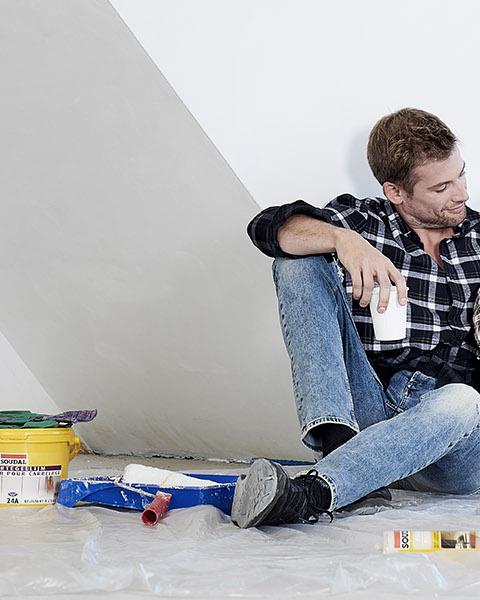

Sealing around a bath
Whether you are installing a complete bathroom suite or simply resealing your current one, it is important you choose the right sealant for the job. Sealing around bathroom fixtures ensures a clean and watertight finish around your bath, toilet, basin and shower.
It should be a straightforward task that you can do yourself! Knowing how to seal your bathroom fixtures properly will help you to save both time and money!
Guide to Resealing a bath
Our step-by-step guide will help you re-seal your bath and protect your bathroom from any unnecessary leaks and/or mould growth.
How to remove old sealant?
If you are replacing old sealant around a bath, the first step is the removal of the existing silicone. Use a Sealant Removal Tool or Safety Knife to separate the sealant away from the bathtub and the wall, then extract all silicone material from the joint. Take care not to scratch any surfaces in the process.
You can remove any leftover silicone residue using Soudal's Silicone Remover.
How to seal a bath?
TIP: Fill the bath with water before applying any sealant to prevent any future cracking when taking a bath. Do not empty the bath until the sealant is fully cured.
1. Make the surface clean and dry
Remove dirt, dust and grease with a clean cloth. You should degrease non-porous surfaces with alcohol or paraffin-based product. Dry the surface before applying any sealant.
2. Tape off the joint edges
To ensure a clean finish, use masking tape to tape off the joint neatly. Make sure that the joint is 5mm wide on each surface.
3. Open the cartridge
Cut the top of the cartridge with a safety cutter. Screw the nozzle onto the cartridge and cut the end off to the same width as the joint. Place the cartridge in the caulking gun and squeeze the handle until the sealant appears.
TIP: For best results cut the cartridge nozzle at an angle.
4. Start sealing
Place the nozzle where you want to start sealing. Squeeze the handle and move the caulking gun along the joint in a smooth motion. Apply sufficient sealant to ensure that the product adheres well.
TIP: Silicone sealants can cause staining on natural stone. Do you have marble, bluestone or another natural stone surface in your bathroom? Then use Fix ALL Flexi to seal your joints.
5. Smooth and remove the tape
Wet your finger or putty spreader in a soapy solution and smoothen along the joint. Immediately remove the masking tape and carefully smoothen again to avoid any protruding edges once cured.
6. Rinse with clean water
Use a plant sprayer with clean water to lightly remove any soap residues.
Also useful:
- Soudal Cleaner & Degreaser is a powerful cleaner for quickly removing all grease and dust from surfaces.
You can find all information about bathroom sealants' use, shelf life and composition in the technical specifications on our product pages.
What is the best sealant for sealing a bath?
With so many options available on the market, it is important to choose the best sealant for sanitary applications.
Stay Fresh is the ultimate anti-mould and food-safe silicone sealant. Specifically formulated to prevent mould growth, Stay Fresh is a permanent end to unsightly mould and fungus, discolouration and adhesion problems. The premium silicone sealant is suitable for sealing in sanitary areas prone to high humidity - bathrooms, showers and kitchens.
Fix ALL Flexi is an all-in-one hybrid sealant and adhesive. The highly flexible sealant is suitable for all sanitary sealing applications and does not stain on natural stone surfaces, unlike most 'silicone' sealants. It is also suitable for use on wet surfaces and areas prone to high humidity. Flexi can also be used as an adhesive, allowing you to bond and seal bathroom fixtures with a single product!
Alternatively, if you do not wish to use a sealant, you can instead use a self-adhesive sealing strip. The easy-to-use strips adhere to most sanitary materials and provide a watertight seal around showers, baths and sinks.
Degreaser
Safety cutter
Masking tape
Clean cloth
Soudal Joint Finish or soap solution
Plant sprayer with clean water



